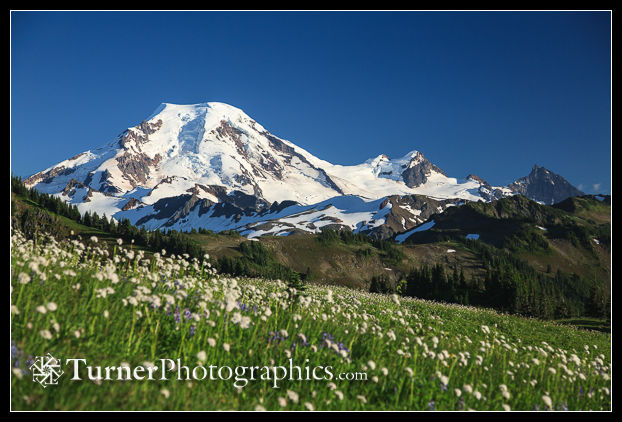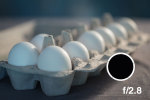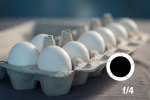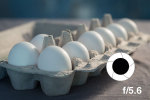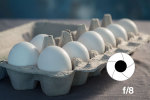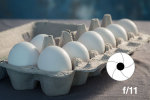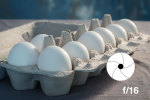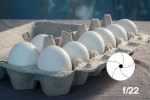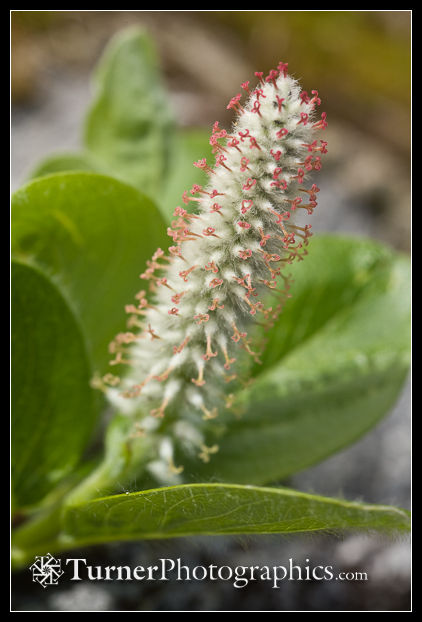Digital Photo Tip: Use Aperture to Control Depth of Field
One of the most powerful creative tools photographers have at their disposal is choosing which parts of a photo should be sharp and which parts should be soft. This sharp/soft contrast is a very good way to set a subject apart from the background. We call this depth of field because we’re controlling apparent sharpness from close to the lens to the far distance.
In the pair of landscape photos above, one was made at the relatively wide aperture of f/5 (left side of the slider)and the other stopped down to f/16 (right side). Notice the difference in sharpness in the foreground flowers. My focus point was on distant Mount Baker in both versions. These images were made with my lens at 70mm, a short telephoto.
I almost always use the aperture-priority auto exposure mode on my cameras (both my big single-lens reflex and my compact camera) because controlling depth of field by choosing a large or small aperture is an important creative decision. I let my camera choose the appropriate shutter speed for my choice of aperture.
You may recall from my discussion back in February that the aperture is the size of the hole letting light through the lens. Because the numbers are actually a ratio, big numbers represent a small hole and small numbers a big hole. Seems backward, but that’s just the way it is.
For shallow depth of field, where only a narrow band of subject is in focus, select a small-numbered aperture. Most less-expensive lenses have a maximum aperture around f/4. To get a bigger hole like f/2.8 or f/1.4, for even shallower depth of field, you have to pay big bucks. You’ll find that focus is very critical when photographing wide open, or close to it, especially with telephoto lenses. The series with the eggs was photographed with a 100mm lens.
For maximum depth of field, with as much of the photo as possible in focus, select a large-numbered aperture, i.e. f/16. There’s a diminishing return on sharpness as the hole gets smaller because of diffraction.
When I’m photographing close-ups of flowers, like the willow blossom above, I don’t usually stop down as far as possible. I want my main subject to be sharp, but the background a little bit (or a lot) soft. My aperture was f/9 on the left, f/16 on the right. I use the depth of field preview button on my camera to preview overall sharpness before I press the shutter release.
As you’re learning the effect of aperture on depth of field, set up a photograph and capture a series of images, changing only the aperture for each shot. Then you can compare them on your computer and see the effect, much like the egg carton series I shot in my studio.
Click here to get your promo code iherb today.


